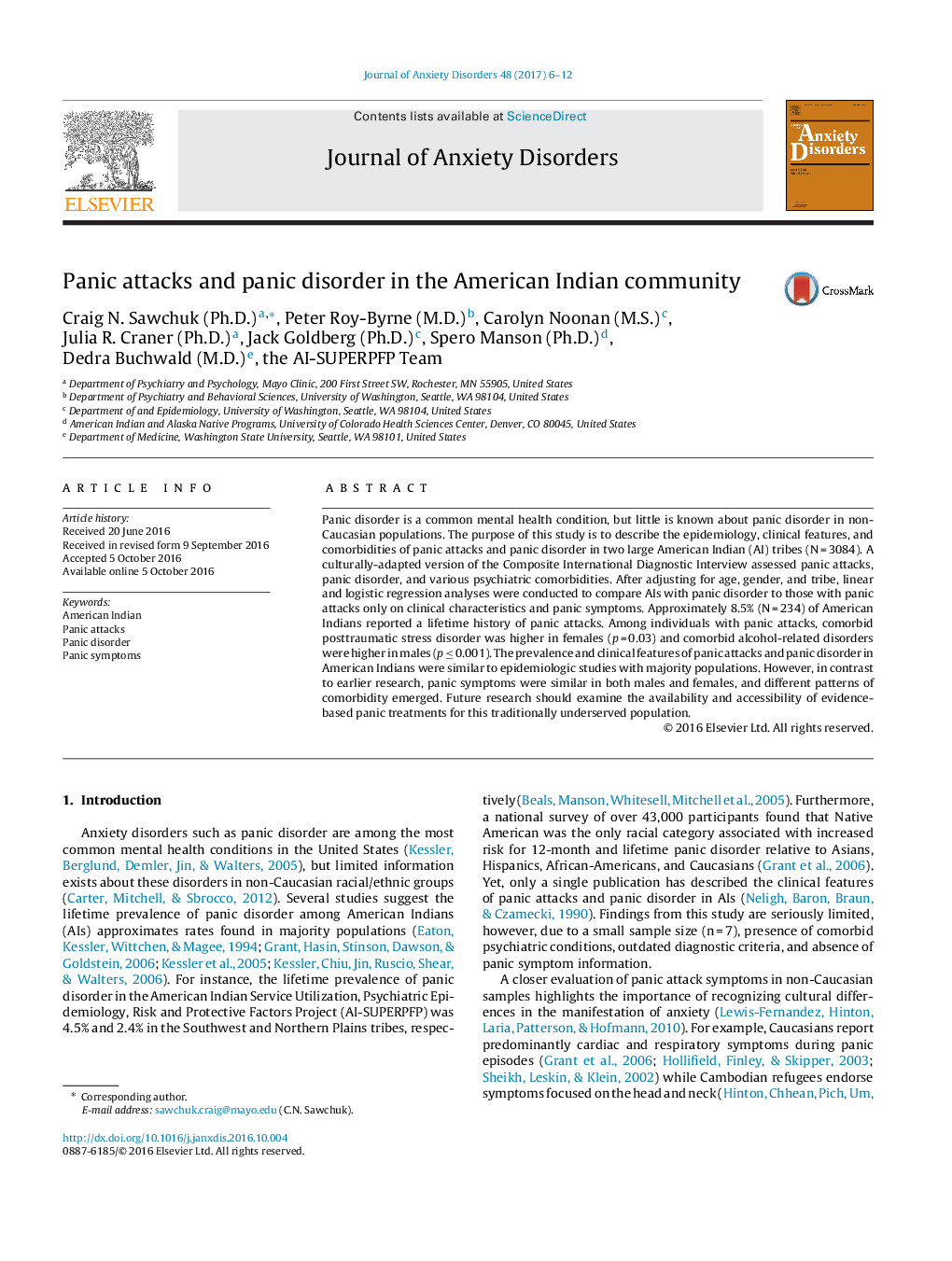| Article ID | Journal | Published Year | Pages | File Type |
|---|---|---|---|---|
| 5038882 | Journal of Anxiety Disorders | 2017 | 7 Pages |
â¢Lifetime panic attacks (9%) and panic disorder (4.1%) among American Indian women.â¢Lifetime panic attacks (8%) and panic disorder (2.6%) among American Indian men.â¢Panic attacks were associated with significant psychiatric comorbidity.â¢Dizziness and fears of dying were common symptoms for those with panic disorder.
Panic disorder is a common mental health condition, but little is known about panic disorder in non-Caucasian populations. The purpose of this study is to describe the epidemiology, clinical features, and comorbidities of panic attacks and panic disorder in two large American Indian (AI) tribes (N = 3084). A culturally-adapted version of the Composite International Diagnostic Interview assessed panic attacks, panic disorder, and various psychiatric comorbidities. After adjusting for age, gender, and tribe, linear and logistic regression analyses were conducted to compare AIs with panic disorder to those with panic attacks only on clinical characteristics and panic symptoms. Approximately 8.5% (N = 234) of American Indians reported a lifetime history of panic attacks. Among individuals with panic attacks, comorbid posttraumatic stress disorder was higher in females (p = 0.03) and comorbid alcohol-related disorders were higher in males (p â¤Â 0.001). The prevalence and clinical features of panic attacks and panic disorder in American Indians were similar to epidemiologic studies with majority populations. However, in contrast to earlier research, panic symptoms were similar in both males and females, and different patterns of comorbidity emerged. Future research should examine the availability and accessibility of evidence-based panic treatments for this traditionally underserved population.
